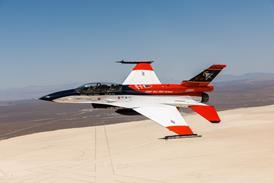The number of light military helicopters produced worldwide is projected to decline more than 56% to just 92 units a year in 2026 from a decade prior.
The near-term decline in production is due to current re-equipment cycles coming to an end in the USA and in many European countries, according to the projection’s publisher Forecast International.
In the USA, Bell Helicopter is set to finish deliveries of the UH-1Y Venom utility helicopter to the US Marine Corps by the end of 2018. The USMC will take deliveries of the Venom’s sister aircraft, the Bell AH-1Z Viper attack helicopter, until 2022.
In Europe, production of the Airbus Helicopter EC665 Tiger is also petering out, said Raymond Jaworowski, senior aerospace analyst with Forecast International.
“They’ve just about finished the order book,” he says.
Production of light military rotorcraft is forecast to decline to 146 units in 2018, from 211 in 2017. A rebound to 154 units is expected in 2019, but annual output is then projected to decline over the next several years, until it bottoms out in 2026 at 92 units a year. The industry doesn’t return to triple-digit production until 2029, topping out soon after at 117 units a year in 2030 and hovering around that number through the end of the projection in 2032.
"Driving the return to market growth in the long term of our forecast will be production ramp-ups for such new programs as the French military's Helicoptere Interarmees Leger (HIL) program, the South Korean Army's Light Armed Helicopter (LAH) effort, and the US Army's Future Attack Reconnaissance Aircraft (FARA) project," says Jaworowski. "The manufacturer selected to produce the FARA platform will find itself in a position to possibly garner orders for hundreds of rotorcraft for the US military, with export sales potentially adding to this total."
Production for the FARA program will be worth an estimated $2.1 billion by 2032, representing fully 8.8% of the market by value and 7.3% of the market by unit production, according to Forecast International. What’s more, production of the FARA platform is expected to continue well beyond 2032.
The Airbus Helicopters H160M was selected for the HIL program, which aims to replace the Alouette III, Dauphin SP and Fennec helicopter fleets with the H160M. And, LAH is being developed by Korea Aerospace Industries (KAI) from the Airbus Helicopters H155.
It is projected that 1,630 light military rotorcraft will be produced during the 15-year timeframe between 2018 and 2032. The value of those helicopters is estimated at $24.4 billion.
Forecast International defines a light military rotorcraft as having a maximum gross weight of less than 6,804kg (15,000lb).
Overall, Forecast International's market share projections indicate that China's Avicopter will lead the light military helicopter market in unit production, producing 330 units over the 15-year forecast period for a market share of 20.2%. Airbus Helicopters is next, with production of 295 units for an 18.1% share. Hindustan Aeronautics of India is third on production of 267 units, representing a 16.4% share. Bell is projected to be fourth, with production of 174 units for a 10.7%. Lastly, KAI of South Korea will rank fifth with production of 137 rotorcraft for an 8.4% market share.
Source: FlightGlobal.com



















